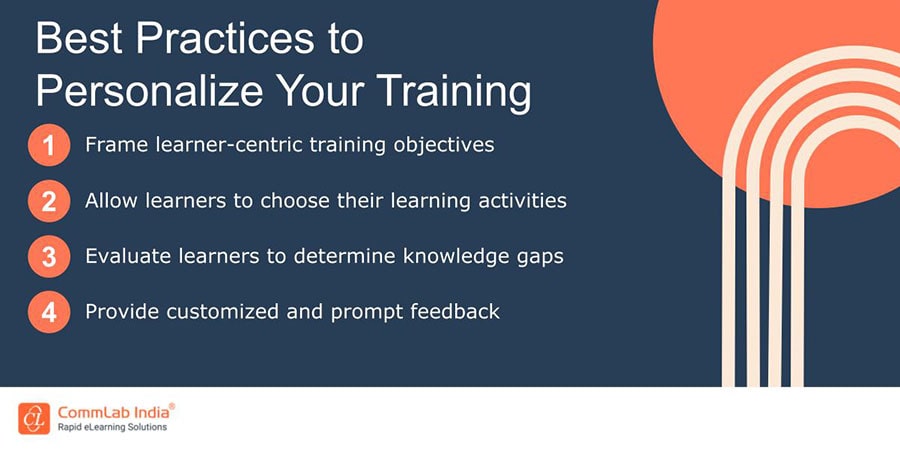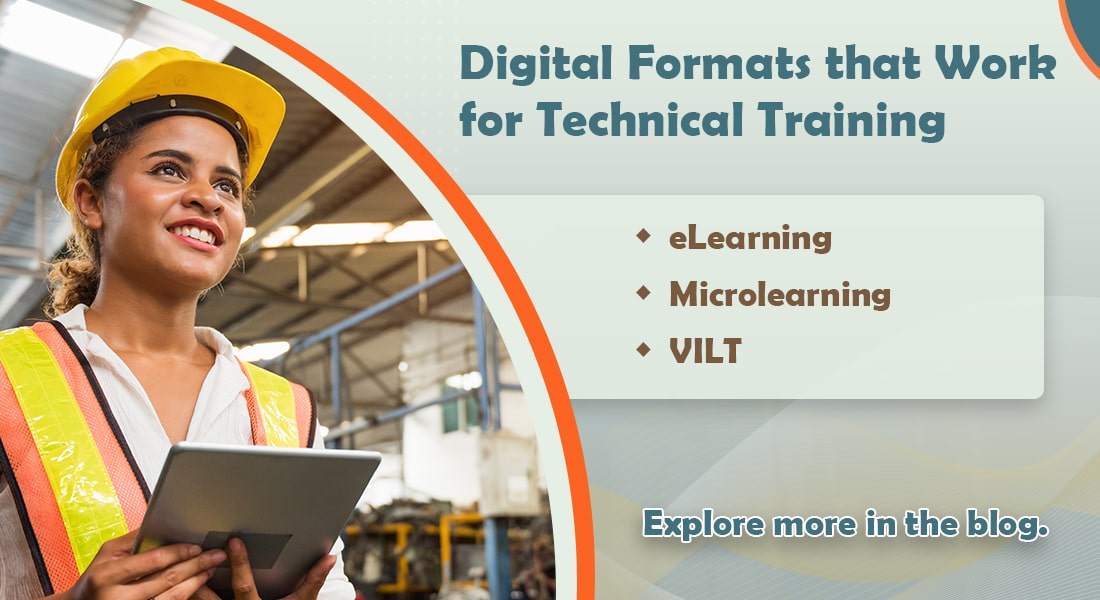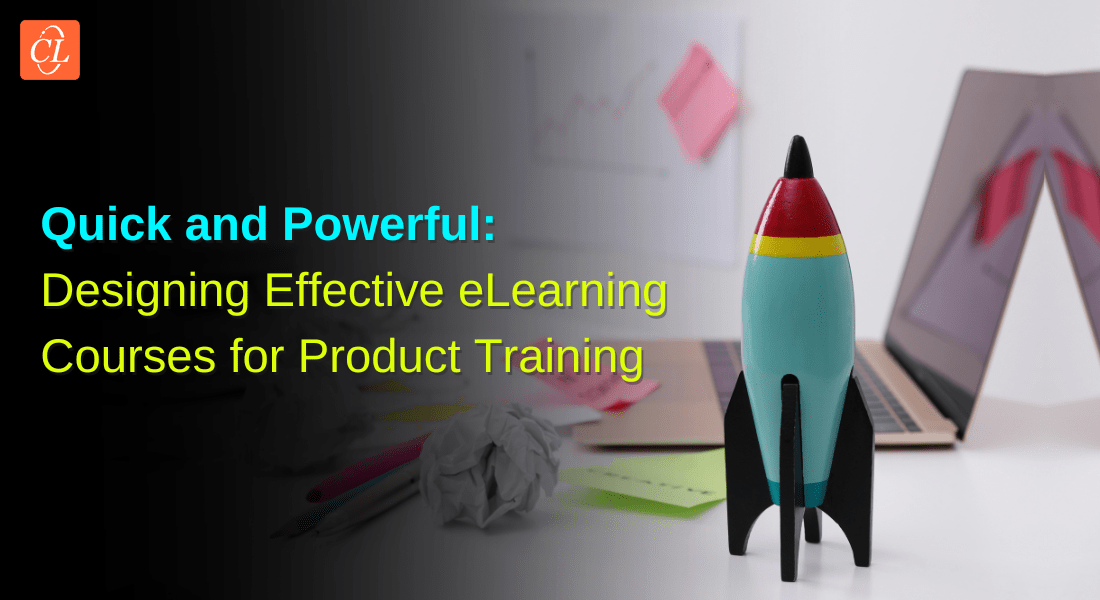What is The Role of Custom eLearning Animations and Simulations in Corporate Training

In today's dynamically evolving corporate landscape, keeping employees engaged and up-to-date with the latest skills, processes, and regulations is a top priority. Traditional text-heavy training manuals are proving increasingly ineffective in the face of shorter attention spans and the need for more experiential learning. That's where custom eLearning animations and simulations are transforming the way companies approach corporate training. Let's delve into what these learning formats are, their power to enhance corporate training, and specific use cases demonstrating their versatility.
Want to Know the Role of Custom eLearning Animations and Simulations?
Here are a few benefits of it -
- Increased engagement and motivation
- Improved knowledge retention
- Enhanced understanding of abstract concepts
- Safe practice environments
What are Custom eLearning Animations and Simulations?
Custom eLearning Animations
Custom eLearning animations are dynamic visual representations designed to illustrate complex concepts, procedures, or scenarios. Animations leverage movement, color, and sound to bring information to life in a way that static text and images cannot. They are tailor-made to suit your company's specific training objectives.
Custom eLearning Simulations
Simulations go beyond simply visualizing information. They provide learners with interactive environments. These environments let learners practice skills, make decisions, and experience the consequences of their actions in a risk-free setting—all before they handle real-world tasks.
→ Download Infographic Now: Custom eLearning Offers Personalized Learning to Your Learners
The Transformative Benefits of Animations and Simulations in Corporate Training
1.Increased Engagement and Motivation
Interactive and visually stimulating animations and simulations capture learners' attention far more effectively than passive forms of learning. The ability to 'do' rather than just 'read' makes learning enjoyable, boosting motivation and completion rates.

2.Improved Knowledge Retention
When information is connected to visual cues or hands-on experiences, learners are more likely to understand and remember it. Animations and simulations can break down complex concepts into bite-sized, digestible chunks, aiding long-term retention.
3.Enhanced Understanding of Abstract Concepts
Some ideas, especially in technical training situations, are difficult to grasp through text alone. Animations visualize the invisible, such as molecular interactions, manufacturing processes, or the inner workings of machinery. Simulations can give learners control over these processes, fostering a deeper understanding of their workings.
4.Safe Practice Environments
Simulations are especially valuable for industries where mistakes in the real world can be costly or dangerous. They provide a safe space for learners to experiment, fail, receive feedback, and refine their skills without causing harm.
5.Personalized Learning Experiences
Well-designed simulations can offer branching scenarios, different difficulty levels, and adaptive feedback. This empowers learners to progress at their own pace, tailoring the learning experience to their needs.

6. Accessibility and Scalability
Once developed, eLearning animations and simulations are available to employees anytime, anywhere. This is ideal for companies with dispersed workforces, varied shift patterns, or the need for delivering consistent, just-in-time training across the organization at scale.
Use Cases: Putting Custom Animations and Simulations into Action
1. Onboarding and Compliance Training
Animations: Short, engaging animated videos can effectively introduce employees to company policies, standard procedures, and ethical guidelines, enhancing consistency and knowledge retention.
Simulations: Interactive compliance simulations can place learners in realistic scenarios where they must identify and resolve ethical dilemmas or demonstrate their understanding of regulations.
2. Product and Sales Training
Animations: Product animations can showcase the features, benefits, and inner workings of complex products more vividly than text descriptions. This is especially valuable for sales teams, giving them greater confidence when explaining product value to clients.
Simulations: Simulations can help sales teams practice customer conversations, handle objections, and navigate sales negotiation scenarios in a risk-free environment.
3. Technical and Safety Training
Animations: Detailed animations can demonstrate step-by-step procedures for equipment use, troubleshooting, or safety protocols. These are easily accessible on-demand, even on the manufacturing floor.
Simulations: High-fidelity simulations can replicate complex equipment or dangerous environments where learners can develop their technical skills, problem-solving abilities, and safety awareness before engaging with the real thing.
Key Considerations for Successful Integration
While the potential benefits are undeniable, simply adding animations and simulations to your training won't automatically transform it. Here are some key considerations:
- Clearly Defined Learning Objectives: Before investing in custom development, have a crystal-clear understanding of what skills or knowledge you want learners to acquire. This will guide the design of your animation or simulation.
- Integration with Overall Training: Animations and simulations rarely work as standalone training solutions. Carefully consider how they will complement other training materials, such as instructor-led sessions or self-study modules. Here’s a short video to help you understand how you can blend various training techniques and design interesting blended learning modules.
- Content Quality and Accuracy: Ensure the subject matter of your animations and simulations is factually correct, up-to-date, and aligns well with company policies.
- User Experience (UX) Design: Prioritize intuitive navigation, clear instructions, and a visually appealing interface. A poorly designed eLearning experience, even with excellent animations or simulations, will frustrate rather than engage learners.
- Technical Compatibility: Ensure your animations and simulations can run smoothly on your employees' devices and within your Learning Management System (LMS).
Investing in the Future of Corporate Training
Developing custom eLearning animations and simulations involves an upfront investment in time, expertise, and resources. However, the long-term benefits outweigh the initial costs. Consider these potential gains:
- Reduced Training Time and Costs: Well-designed simulations can accelerate the learning curve, allowing employees to reach competency faster and with potentially fewer in-person training sessions.
- Improved Productivity and Performance: Effective training translates into better job performance, reduced errors, higher customer satisfaction, and enhanced problem-solving skills.
- Enhanced Employee Retention: Engaging and innovative training programs demonstrate an investment in employees' development. This can lead to increased job satisfaction and reduced turnover.
A Note on Partnering with Specialists
Unless you have in-house animation and instructional design experts, you'll likely need to collaborate with specialized eLearning development companies. When selecting your partner, look for:
- A Portfolio of Success: Review samples of their work to assess quality and their ability to match animations or simulations to different learning objectives.
- Understanding of Adult Learning Principles: Choose partners familiar with effective instructional design strategies for corporate audiences.
- Technical Expertise: The developers must be proficient in authoring tools (like Articulate Storyline, Adobe Captivate), animation software, and proficient in handling your LMS integration.
Parting Thoughts!
Custom eLearning animations and simulations are no longer 'nice to have' additions to corporate training programs. They are powerful tools for transforming learning experiences, maximizing engagement, knowledge retention, and overall workforce competency. By thoughtfully deploying these strategies, your organization can secure a competitive edge and position itself for long-term success. As a bonus, here’s a comprehensive infographic about custom eLearning, download it for free now!


![Custom eLearning — How it Can Offer Personalized Learning Experiences [Infographic]](https://no-cache.hubspot.com/cta/default/59327/1353ae98-9928-439e-848a-c80f513a72dc.png)


